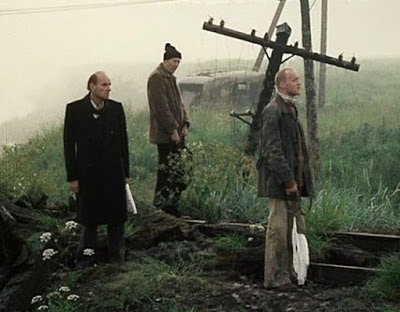I thought I would try and write today about some new work I’ve been making this week which I feel is the beginning of a more coherent series of new paintings after two quite experimental years of working and attempt to explain some of the context this work is developing out of.
It’s not insignificant
to discuss that bubbling away in my thinking whilst in the studio has been the
stuff I’ve been reading, and watching, whilst in lockdown. Most notably the
book ‘A Year In The Country: Wandering Through Spectral Fields: Journeys
in Otherly Pastoralism, the Further Reaches of Folk and the Parallel Worlds of
Hauntology’. by Stephen Prince, which has been a follow on read
from Mark Fisher’s ‘The Weird and the Eerie’, with many overlapping themes
discussed.
I think many of these qualities have often been implicit in my
own work in landscape painting, although somewhat unconsciously on my part, but
remarked upon by my artist friends Andrew Smith and Hugh Marwood, who I have
collaborated with. This book however, has
been useful in helping me bring them into sharper focus in recent months to
help things move forward. The book has inspired an enormous reading and watching
list, and notebooks full of thoughts, and of books, films and TV I’m now trying
to seek out. Typically, despite subscriptions to both Netflix, Amazon Prime and
the BFI I can’t find hardly any of the films and TV I’m now keen to seek out
(the BFI has some).
As mentioned, the lockdown walks found me wanting to seek a deeper connection with nature in my painting but still keep in my work a connection to my direct experience of living in the outskirts of town on the edge of an estate. Many of my recent paintings before lockdown have tried to evoke an interest in a darker, sometimes uncanny, sense of existence that can live parallel alongside the seemingly ordinary and mundane. They also hold many of my own anxieties about being a parent to a particularly vulnerable child and trying to keep him safe as he grows up and seeks his independence in this environment.
The films of director Ben Wheatley are discussed in ‘A Year In
The Country’, in particular ‘A Field In England’ set entirely in a field during
a day in the English Civil War, which led me to buy and watch it recently. The
story deals with a group of army deserters who ‘after ingesting some magic mushrooms
fall victim to the powerful psychic energies of the mystical field’. I liked it
a lot, not least the beautiful black and white cinematography, but also it
explores an idea of the field being like a stage, with many buried past
histories and occurrences, where the whole story that unfolds takes place. I can also see a link to Sergei Tarkovsky’s
eerie sci-fi film, ‘Stalker’, which is also discussed by both Fisher and Prince
and which I have also recently watched. The film depicts a journey
through an enigmatic post-apocalyptic landscape, where hired guide—the
Stalker—leads a writer and a professor into the heart of the Zone, the
restricted site of a long-ago disaster, apparently a landing by an alien
spaceship, where the three men eventually travel to the Room, a place rumored to fulfill one’s most deeply held desires. The
film is an adaptation of a science-fiction novel by Russian authors Arkady and
Boris Strugatsky, ‘Roadside Picnic’, which I also recently finished reading.
I’m also now reading ‘Zona’ by Geoff Dyer, a very funny and engaging book about
the film, examined scene by scene with lots of interesting digressions, and the
author’s obsession with it, to complete my experience of it.
All of which sort of leads me to these new paintings. Here we are, alone and exposed in an open muddy field occupied by large ominous looking pylons on the edge of a nearby housing estate. The day is turning to dusk, seeking to evoke some of those anxious feelings of being trapped in a place, a zone, surrounded by dark trees as autumn fades to winter, home just in sight but still far away, trying to beat the clock and get home before night descends…
I’m developing the paintings using some reference photographs my photographer friend, Laura took on a trip we made to this sight, which is how I’ve often developed earlier series of work based on motorways and canals. The paintings I’m sharing here aren’t quite complete-I would like to add more highlights on the pylons-but are not that far off. It feels really exciting to be working on a series of works again though and the subject matter is helping me push the language of my painting into newer territories that I’m really enjoying too. Most importantly it seems to be helping to coalesce all these ideas, experiences and influences of recent months into a more tangible form…







